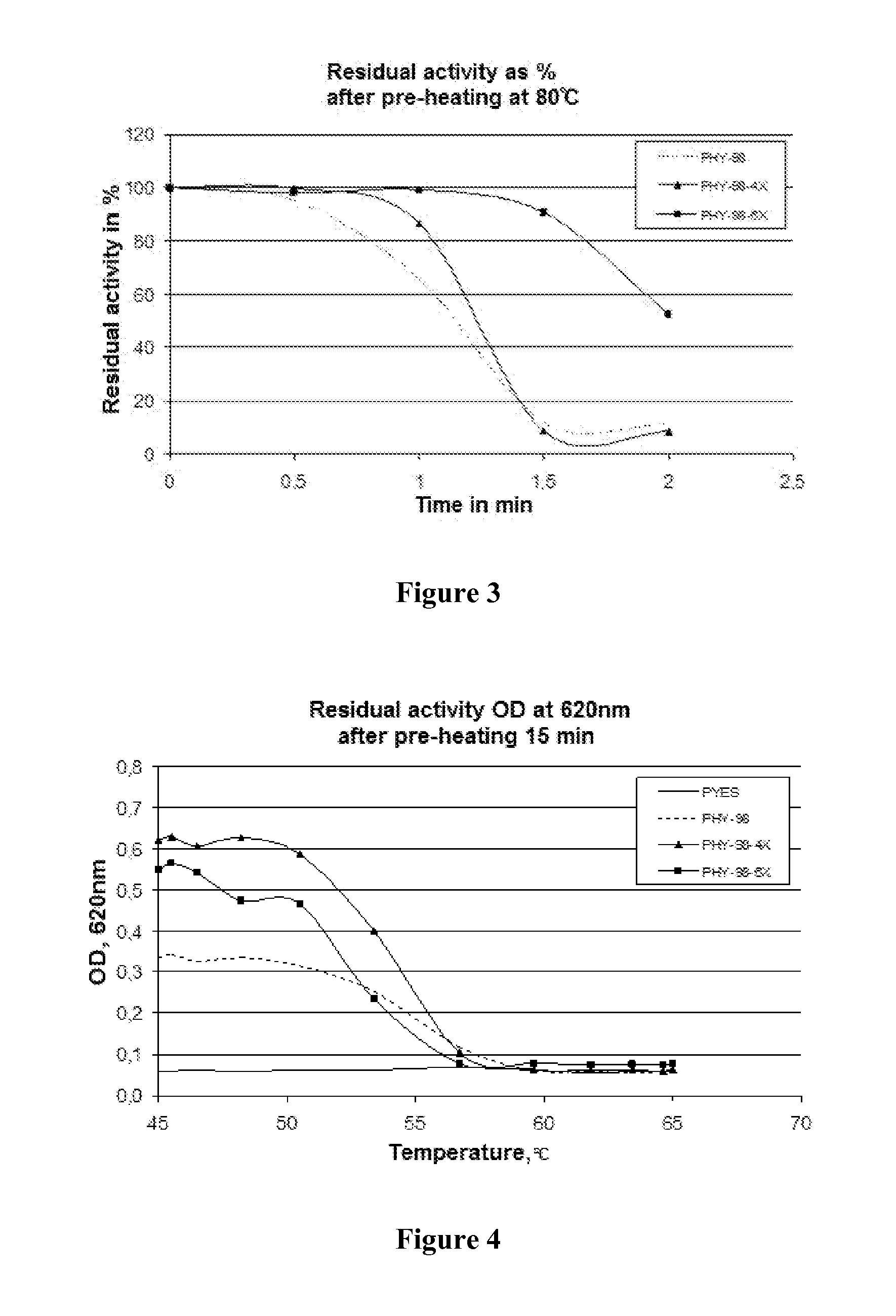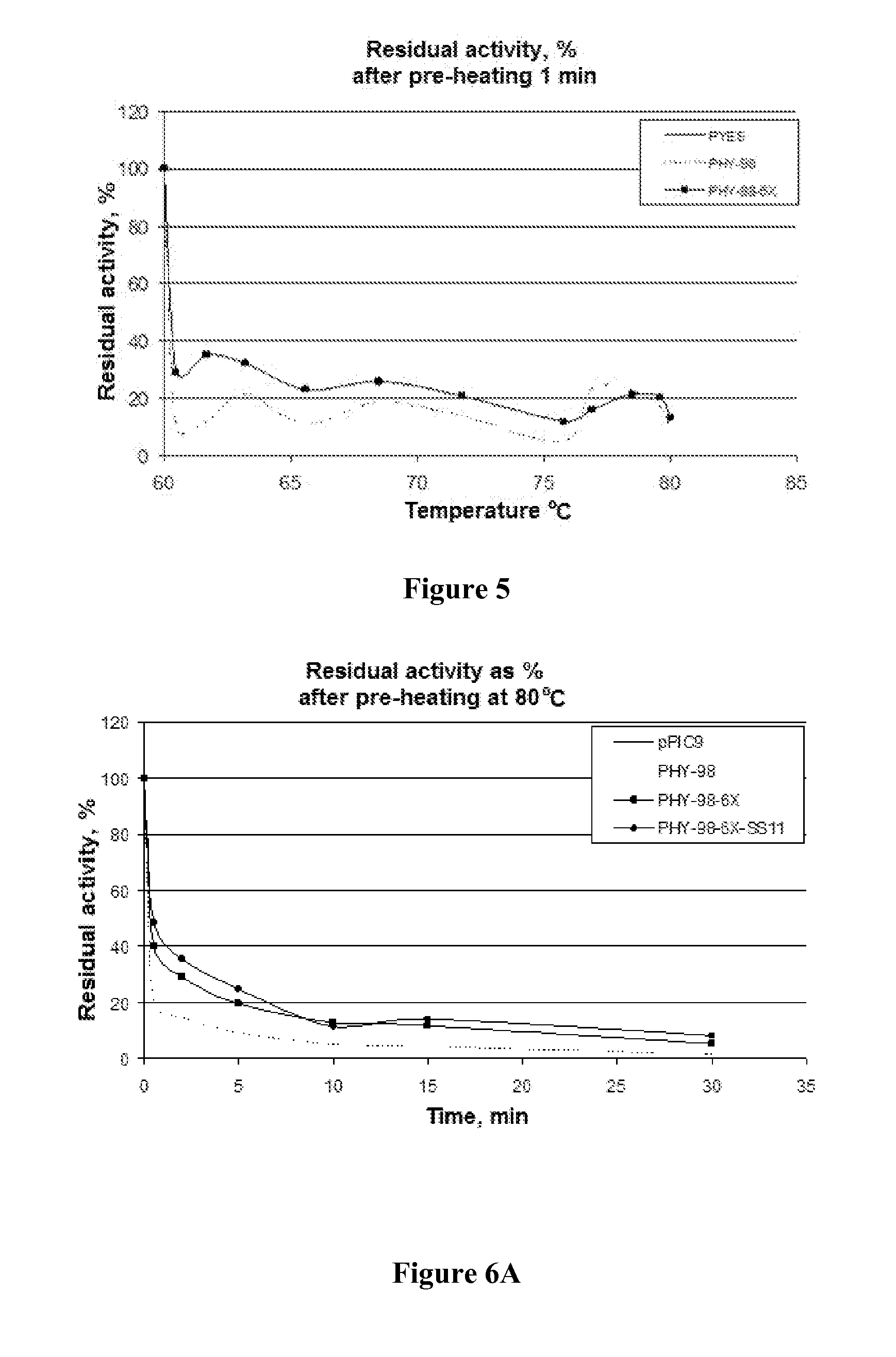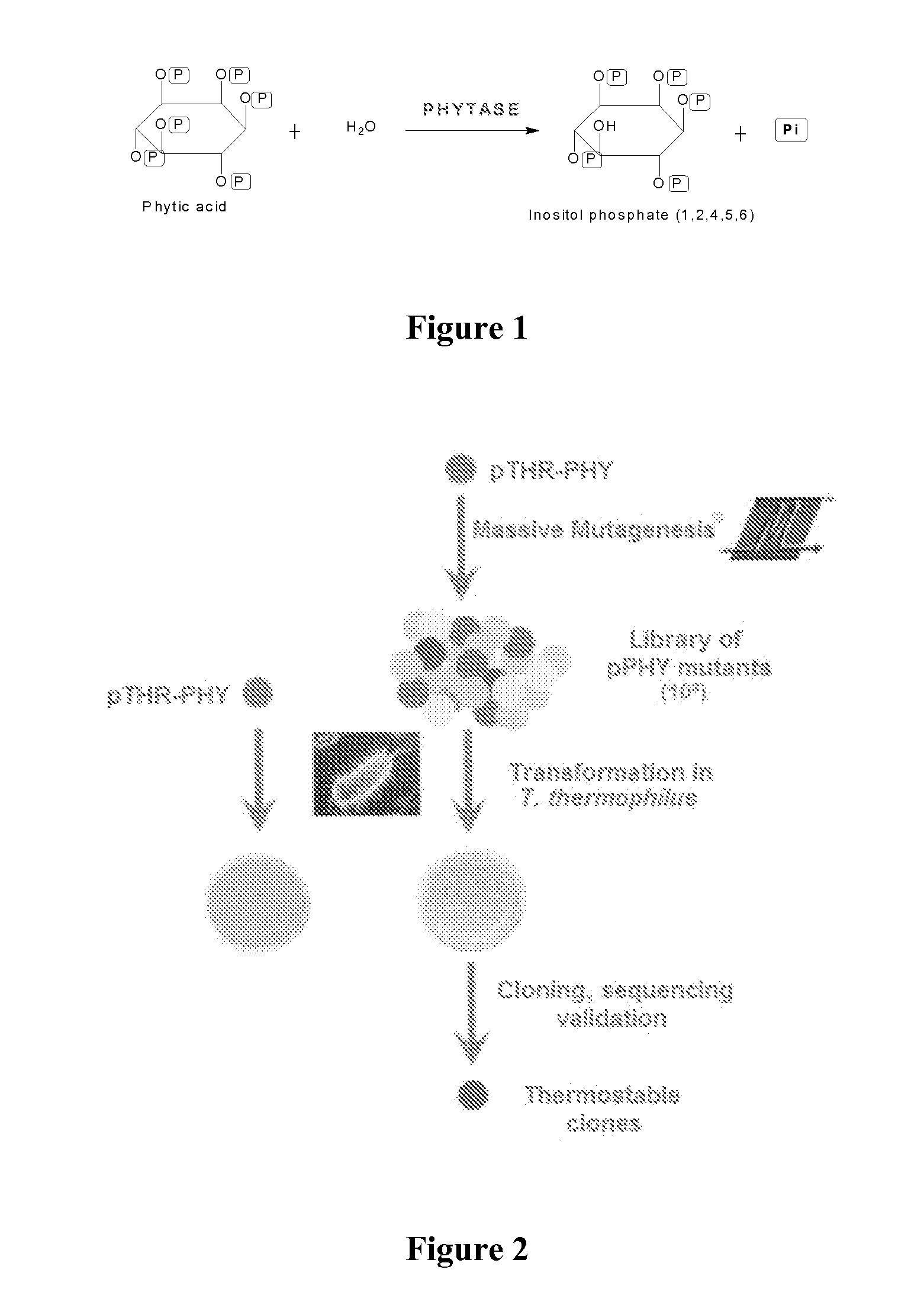Enhanced phytase variants
a technology of phytase and variants, applied in foreign genetic material cells, sugar derivatives, enzymes, etc., can solve the problems of phytate originating from ingested plants not being a useful source of phosphorus, using phytases, and the proliferation of green algae in rivers and watercourses, so as to achieve the effect of exceeding current limits
- Summary
- Abstract
- Description
- Claims
- Application Information
AI Technical Summary
Benefits of technology
Problems solved by technology
Method used
Image
Examples
example 1
Obtaining Enhanced Phytase Variants from Yersinia intermedia
Plasmidic Constructs:
[0094]Producing enhanced phytase variants of the present invention required the construction of various plasmidic vectors that were capable of carrying out the directed mutagenesis experiments necessary in order to obtain libraries of variants or mutants as well as for the expression of said mutants in various screening or production hosts.
[0095]Constructs in pET25b:[0096]Using molecular biological techniques that are well known to the skilled person, the ORF (Open Reading Frame) ZP—00832361 corresponding to the sequence NCBI ATCC 29909 and to the corresponding nucleotide sequence NZ_AALF01000052, region: 1889 . . . 3214 was cloned into the plasmidic vector pET25b. Before cloning, the original signal sequence (first 23 amino acids) was deleted from the ORF and replaced by the signal sequence for the phytase of Escherichia coli. This signal sequence for the phytase of Escherichia coli had been cloned in...
example 2
Expression of Enhanced Variants of the Phytase from Yersinia intermedia in Saccharomyces cerevisiae
[0112]The plasmid pYES2 containing the enhanced phytase variant from Yersinia intermedia as described above was transformed by electroporation in the yeast strain Saccharomyces cerevisiae ΔPho4 and the transformants were selected on SD-U solid medium. Several clones were pre-cultured in liquid SD-U medium overnight at 30° C., with agitation. Said pre-cultures allowed more culture to be seeded in 2% YP Galactose production medium. They were produced overnight at 30° C., with agitation.
example 3
Expression of Enhanced Variants of the Phytase from Yersinia intermedia in Pichia Pastoris
[0113]The plasmid pPIC9 containing the enhanced phytase variant from Yersinia intermedia as described above was transformed in cells of Pichia pastoris that had been rendered competent. After selecting colonies containing the plasmid, one colony was grown for 16 hours at 28° C., with agitation, in 50 mL of BMG medium to form a pre-culture. The production of variants was controlled by using different induction times in 0.5% methanol depending on the desired quantity of said variant. Before induction, the optical density (OD) of the pre-cultures was measured at 600 nm; for induction, optimized ODs of 2 to 60D units were required. The pre-cultures were then centrifuged and re-suspended in BMM medium containing 0.5% methanol at an initial OD in the range 1 to 30 ODu / mL depending on the envisaged induction time: 1 ODu / ml, for 96 hours of induction, 6 ODu / mL for an induction of 72 hours and 30 ODu / m...
PUM
| Property | Measurement | Unit |
|---|---|---|
| Temperature | aaaaa | aaaaa |
| Temperature | aaaaa | aaaaa |
| Temperature | aaaaa | aaaaa |
Abstract
Description
Claims
Application Information
 Login to View More
Login to View More - R&D
- Intellectual Property
- Life Sciences
- Materials
- Tech Scout
- Unparalleled Data Quality
- Higher Quality Content
- 60% Fewer Hallucinations
Browse by: Latest US Patents, China's latest patents, Technical Efficacy Thesaurus, Application Domain, Technology Topic, Popular Technical Reports.
© 2025 PatSnap. All rights reserved.Legal|Privacy policy|Modern Slavery Act Transparency Statement|Sitemap|About US| Contact US: help@patsnap.com



